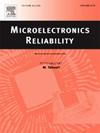基于信息网络的红外温度序列线路板故障检测方法
IF 1.9
4区 工程技术
Q3 ENGINEERING, ELECTRICAL & ELECTRONIC
引用次数: 0
摘要
随着工业对电路板故障检测需求的增加,红外热成像技术已成为有效识别电路板内部故障的一种重要的非侵入性技术。然而,现有的方法在特征提取、局部细节捕获和芯片与故障之间的相关性建模方面存在局限性。为了应对这些挑战,提出了一种综合方法,该方法集成了预处理阶段和增强的基于信息者的模型,称为信息者-故障网络。该方法首先对上电周期红外摄像机采集的部件长期时序加热数据进行预处理。随后,处理后的数据被输入信息者-故障网络模型,以识别电路板上的故障组件。在该网络中,设计了Statistic-SENet模块,利用组件温度的多个统计特征对输入数据进行预处理,并在该模块中嵌入通道关注机制,增强不同芯片与故障之间的相关性,从而提高检测精度和鲁棒性。同时,在Informer编码器中引入了全卷积网络(FCN)和改进的蒸馏机制,增强了模型的局部特征提取能力,降低了计算成本。采用多尺度特征融合策略,提高了模型跨多尺度捕获特征的能力。为了验证该方法的有效性,我们设计并实现了一个实验硬件平台,从电路板组件中收集温度时间序列数据,用于故障检测。最后,一系列实验表明,该方法的准确率达到了0.990。本文章由计算机程序翻译,如有差异,请以英文原文为准。
An informer network-based circuit boards fault detection method using infrared temperature series
As industrial demand for circuit board fault detection increases, infrared thermography has become a crucial non-invasive technique for the efficient identification of internal faults. However, existing methods exhibit limitations in feature extraction, local detail capture, and the modeling of correlations between chips and faults. To address these challenges, a comprehensive method that integrates a preprocessing stage and an enhanced Informer-based model, termed Informer-Fault-Net, is proposed. This method begins with preprocessing the long-term time-series heating data of components, which is collected by infrared cameras during power-on cycles. Subsequently, the processed data is fed into the Informer-Fault-Net model to identify faulty components on circuit boards. Within this network, a Statistic-SENet module is designed to pre-condition the input data by leveraging multiple statistical characteristics of component temperatures, and a channel attention mechanism is embedded within this module to strengthen the correlation between different chips and faults, thereby improving detection accuracy and robustness. Simultaneously, a Fully Convolutional Network (FCN) and an improved distillation mechanism are incorporated into the Informer encoder to enhance the model's capacity for local feature extraction and to reduce computational cost. A multi-scale feature fusion strategy is also employed to improve the model's ability to capture features across multiple scales. To validate the effectiveness of the proposed method, we designed and implemented an experimental hardware platform to collect a temperature time-series dataset from the components of circuit boards for fault detection. Finally, a series of experiments showed that the proposed method achieved an accuracy of 0.990.
求助全文
通过发布文献求助,成功后即可免费获取论文全文。
去求助
来源期刊

Microelectronics Reliability
工程技术-工程:电子与电气
CiteScore
3.30
自引率
12.50%
发文量
342
审稿时长
68 days
期刊介绍:
Microelectronics Reliability, is dedicated to disseminating the latest research results and related information on the reliability of microelectronic devices, circuits and systems, from materials, process and manufacturing, to design, testing and operation. The coverage of the journal includes the following topics: measurement, understanding and analysis; evaluation and prediction; modelling and simulation; methodologies and mitigation. Papers which combine reliability with other important areas of microelectronics engineering, such as design, fabrication, integration, testing, and field operation will also be welcome, and practical papers reporting case studies in the field and specific application domains are particularly encouraged.
Most accepted papers will be published as Research Papers, describing significant advances and completed work. Papers reviewing important developing topics of general interest may be accepted for publication as Review Papers. Urgent communications of a more preliminary nature and short reports on completed practical work of current interest may be considered for publication as Research Notes. All contributions are subject to peer review by leading experts in the field.
 求助内容:
求助内容: 应助结果提醒方式:
应助结果提醒方式:


